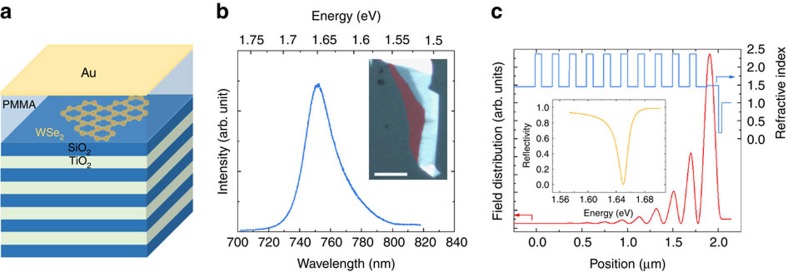Figure 1. Tamm-monolayer device.
(a) Schematic illustration of the Tamm-plasmon device with the embedded WSe2 monolayer. The monolayer is capped with PMMA, whose thickness primarily determines the frequency of the device's optical resonance. (b) PL spectrum of the WSe2 monolayer before capping, recorded under ambient conditions. The dominant emission is identified to stem from the A-valley exciton. Inset: false-colour optical microscopy image of the used WSe2 flake (monolayer in red shaded area; scale bar, 20 μm). (c) Calculation of the electromagnetic field intensity in the heterostructure and the optical resonance (inset). The Tamm-plasmon features a strongly enhanced field maximum close to the surface of the structure, which coincides with the vertical position of the monolayer in the device. The optical resonance features a quality factor on the order of 110.

